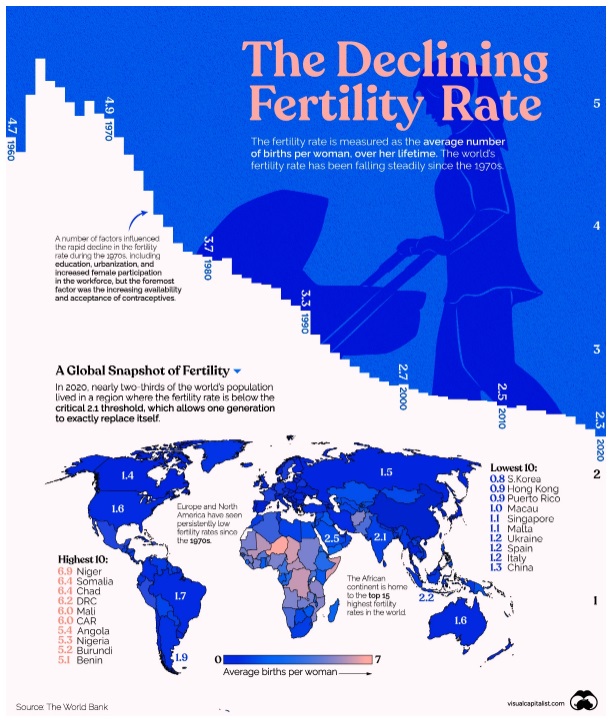
The world’s population is more than three times larger than it was in the mid-twentieth century. The global human population reached 8.0 billion in mid-November 2022 from an estimated 2.5 billion people in 1950, adding 1 billion people since 2010 and 2 billion since 1998.
The world’s population is expected to increase by nearly 2 billion persons in the next 30 years, from the current 8 billion to 9.7 billion in 2050, and could peak at nearly 10.4 billion in the mid-2080s. However, the UN forecasts that rapid growth will slow down – and may even stop entirely by 2100 – because of falling fertility rates.
The Visual Capitalist, lays out a nice infographic below that shows the decline in fertility rates.
In 2020, the world’s fertility rate stood at 2.3, slightly above the replacement rate of 2.1 births per woman, which allows for one generation to replace itself. This is down more than two times from 4.7 in 1960. But the world’s average hides the vast disparities between the fertility rate of countries. We dive into the differences below.
Which Country has the Highest Fertility Rate?
According to the UN, nearly two-thirds of the world’s population lives in a region where the fertility rate is below the critical 2.1 thresholds. In the table below, countries are ranked from the highest to lowest average births per woman in 2020.

Why are Fertility Rates Falling All Over The World?
Declining fertility rates are a consequence of a confluence of many related factors, including (but not limited to):
- Better access to contraception
- Improving opportunities for women outside of childbearing
- Robust healthcare that lowers mortality rates of children
The next generation will have much to grapple with. One must think about all the issues surrounding population decline – pensions, lower consumer demand, and lower housing demand, just to name a few. Of course, this is all predicated on natural declines in population – and assumes no unnatural declines in populations.
See more Chart of the Day posts
By Tom Williams







